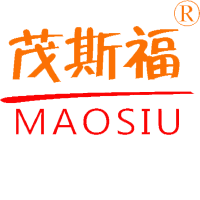
Introduction to Sewing
Sewing is an ancient art that has been practiced for thousands of years, dating back to the earliest civilizations. It is the process of attaching or forming materials together using a needle and thread, and has been a crucial skill for creating clothing, home furnishings, and various other items. Over time, sewing has evolved from a necessity to a creative outlet and a hobby enjoyed by people of all ages and backgrounds.
History of Sewing
The origins of sewing can be traced back to the Neolithic period, where early humans used bone needles and animal sinew to stitch together hides for clothing and shelter. With the invention of the spinning wheel and the loom, thread production became more efficient, and sewing techniques advanced. The Industrial Revolution brought about the sewing machine, which revolutionized the way garments were produced, making mass production possible and significantly reducing the time and effort required for sewing.
Types of Sewing
Sewing encompasses a wide range of techniques and methods, each with its own unique applications. Some common types of sewing include:
- Hand sewing: This traditional method involves using a needle and thread to sew by hand. It is often used for delicate fabrics, intricate embroidery, and mending.
- Machine sewing: Utilizing a sewing machine, this method is faster and more efficient for larger projects and straight seams.
- Embroidery: A decorative form of sewing that uses intricate patterns and designs to embellish fabric.
- Appliqué: A technique where pieces of fabric are sewn onto a base fabric to create a design or picture.
- Quilting: Combining layers of fabric and batting to create a warm, insulated textile, often used for bedding.
Sewing Tools and Materials
A variety of tools and materials are essential for sewing projects. Some of the most common include:
- Needles: Available in different sizes and types, depending on the fabric and thread being used.
- Threads: Comes in various materials such as cotton, silk, and polyester, and can be chosen based on strength, color, and texture.
- Fabrics: A wide range of materials, from natural fibers like cotton and silk to synthetics like polyester and nylon.
- Sewing machines: Manual or electric devices that facilitate the sewing process, with various features and capabilities.
- Patterns: Pre-designed templates that guide the cutting and assembly of fabric pieces for specific garments or items.
- Notions: Additional items such as buttons, zippers, and elastic that enhance or functionally complete a sewing project.
Learning to Sew
Learning to sew can be an incredibly rewarding experience, offering both practical skills and a creative outlet. There are several ways to learn sewing:
- Books and manuals: Detailed guides that provide step-by-step instructions and illustrations for various sewing techniques.
- Online tutorials: Websites, blogs, and video platforms offer a wealth of information and visual demonstrations for sewing projects.
- Classes and workshops: Local community centers, fabric stores, and sewing studios often offer classes for beginners and advanced sewers alike.
- Practice: As with any skill, practice is key to improving one's sewing abilities. Starting with simple projects and gradually moving on to more complex ones can help build confidence and skill.
Sewing in Fashion and Design
Sewing plays a significant role in the fashion and design industries. From haute couture to ready-to-wear garments, sewing techniques are used to construct and finish clothing items. Designers often incorporate unique sewing methods to create distinctive and innovative designs. Additionally, sewing is used in various other design fields such as interior design for creating custom curtains, cushions, and other soft furnishings.
Sewing for Sustainability
In today's environmentally conscious society, sewing can be a sustainable practice. By mending and repurposing old clothes, creating garments from repurposed materials, or choosing to make one's own clothes from eco-friendly fabrics, sewing can contribute to reducing waste and promoting a more sustainable lifestyle.
Conclusion
Sewing is a versatile and valuable skill that has stood the test of time. It offers a means of self-expression, a practical way to create and maintain clothing and home items, and a connection to a rich history of human creativity and ingenuity. Whether for personal use, professional work, or as a hobby, sewing continues to be a relevant and rewarding craft in the modern world.












